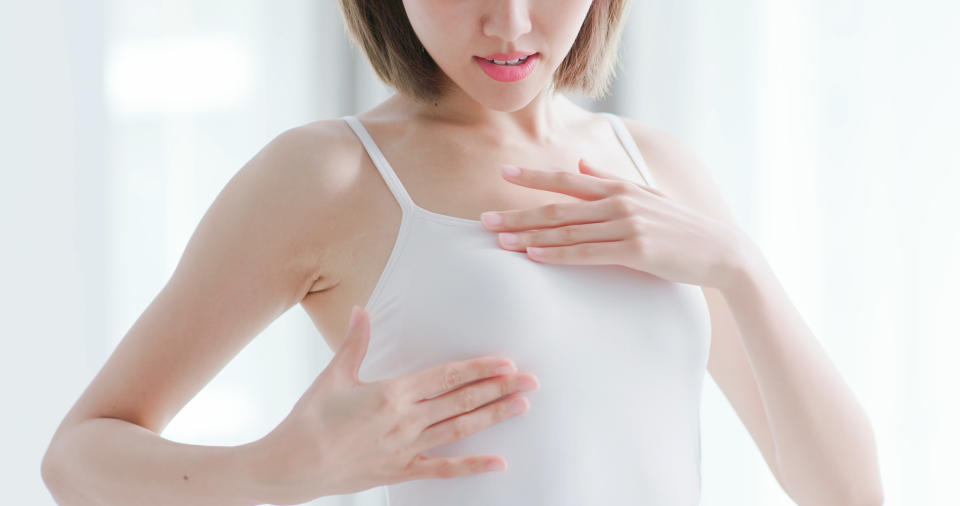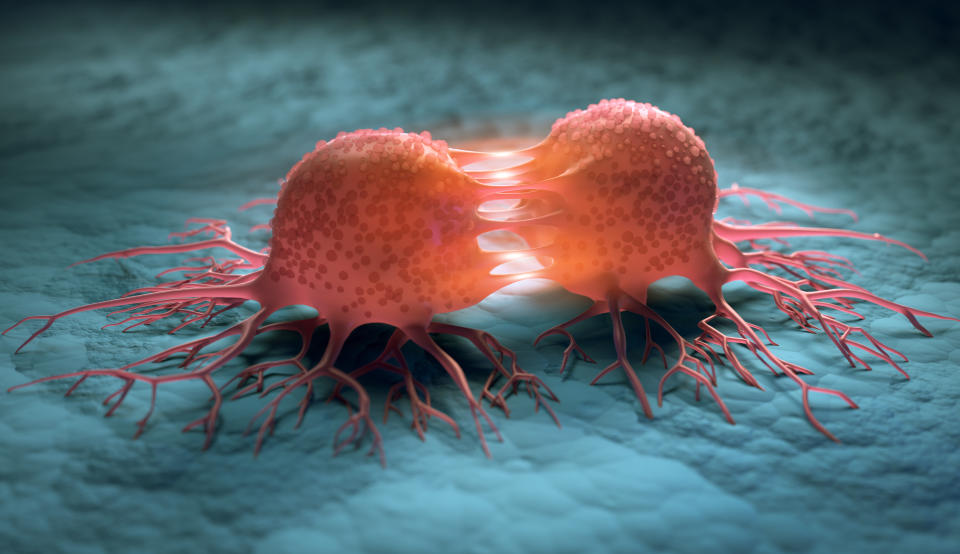GP demonstrates how to check breasts for signs of cancer
Watch: How to check your breasts for lumps
Checking your breasts for lumps just once a month could be life-saving.
One in eight women in the UK and US will develop breast cancer at some point in their lives.
The disease is more common among females aged 50 to 70, hence why the NHS invites these women for mammograms.
It can strike at any age, however, with two in five diagnoses coming about after a woman notices a lump herself.
Read more: Bee venom 'kills breast cancer cells in the lab within an hour'
A survey by the private clinic Pall Mall Medical has revealed more than half (52%) of women do not check their breasts regularly, while just under one in 10 (8%) do not examine themselves at all because they “don’t know how”.
A GP at Pall Mall has therefore put together a video to help women stay breast aware.

“Breast cancer is a one of the most manageable cancers with promising treatment options available if detected early by a quick, yet thorough, at home self-breast-exam,” said Dr Priyanka Vaidya.
“40% of breast cancers are diagnosed by women who have felt a lump when performing the self-exam, stressing the importance of this simple at home check.
“Woman of all ages are recommended to examine their breasts at least once a month, preferably after their period.”
Read more: Breast cancer cells could be manipulated to help treat tumours
Some women have tender and lumpy breasts, particularly near the armpit, around the time of their period.
“For women who do not experience periods, I recommend choosing a specific day in the month and to repeat each month on the same date,” said Dr Vaidya.

How to check breasts for signs of cancer
When checking the breasts, a woman should first look for any obvious swelling, lumps, “abnormal contouring”, dimpling or puckering of the skin.
Examine the nipples to ensure they are not cracked, inverted or “inside out”. Sore nipples can also be a warning sign.
Raise the hands above the head to look for any hidden swelling or lumps. These can also be detected by placing both hands on the hips and gently leaning forwards.
The next step is known as the palpation process. Press the “pads” of the middle three fingers, rather than the tips, against the opposite breast. Cover the whole breast, either in a circular fashion or up and down.
Breast tissue extends from the collarbone to the breast bone, as well as the armpit, all of which should be checked.
Nipples should also be examined for lumps and gently squeezed to check for any discharge, with blood sometimes being a sign of early breast cancer.
Read more: ‘Men get breast cancer too’
The palpation process should be repeated while lying down, with the corresponding arm to the breast raised above the head.
The NHS stresses women should also look for any rashes and “moist, red areas on the nipple that don’t heal easily”.
Pain is rarely a symptom of breast cancer, however, any new discomfort that does not ease should be checked over.
Overall, women should get used to what is “normal” for them at different times of the month.
If any symptoms are discovered, see a GP as soon as possible, remembering nine out of 10 lumps turn out to be non-cancerous.
Although rare, men can also develop breast cancer, with around 370 males being diagnosed with the disease in the UK every year.
Men should look out for painless lumps, nipple discharge, changes to the nipples, swelling and sores in the chest area.
Watch: Man opens up about overcoming breast cancer


